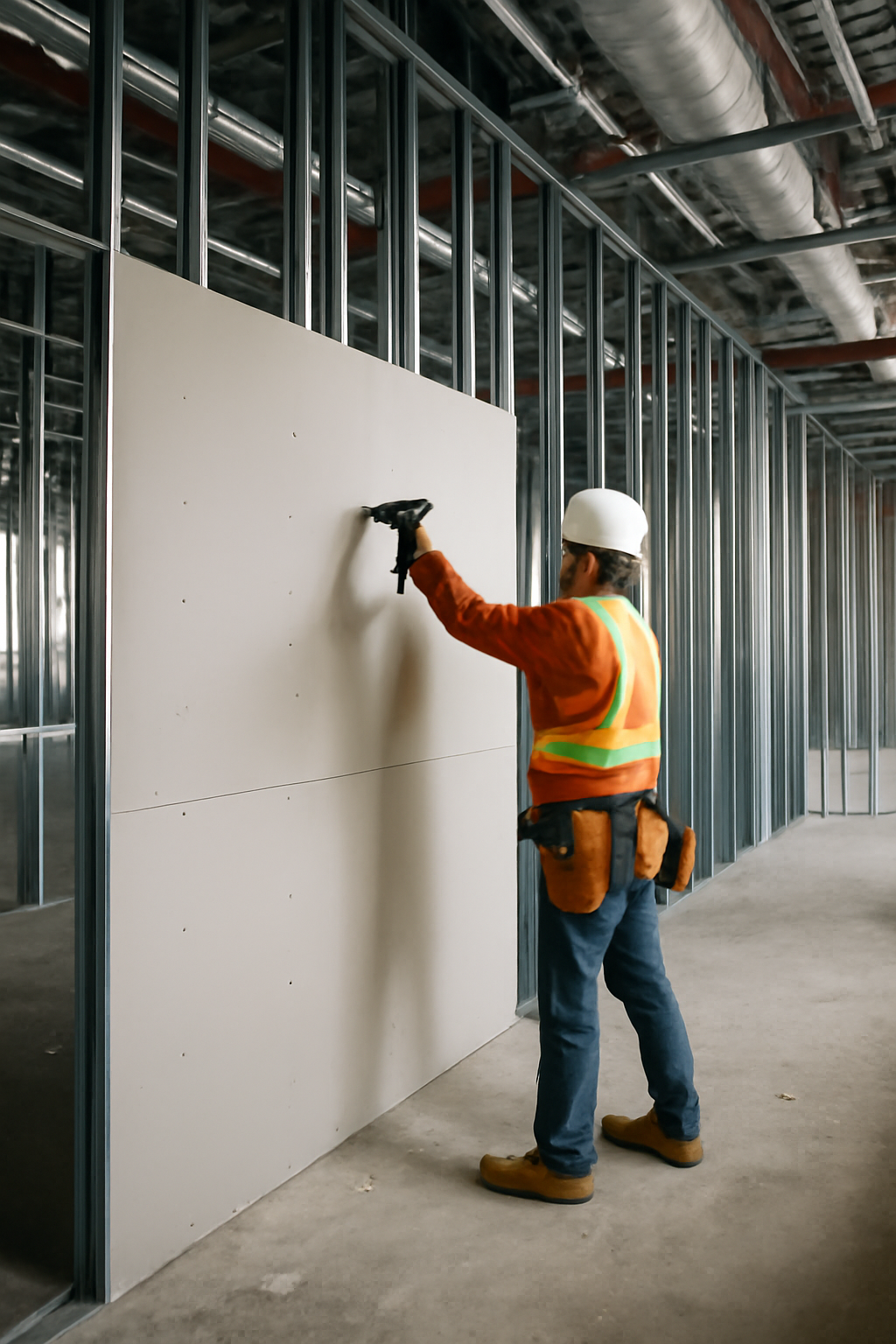
Sound-rated wall assemblies play a pivotal role in the design of hospitals, multifamily residential, hospitality, and commercial office spaces. As an estimator, understanding how these systems affect drywall costs can be the difference between a successful bid and a costly oversight. This blog post unpacks the factors you need to consider when pricing drywall assemblies with sound attenuation requirements, helping you deliver more accurate and defensible estimates.
Sound-rated assemblies are wall systems designed to meet specific Sound Transmission Class (STC) ratings, ensuring adequate acoustic separation between adjacent spaces. These assemblies often incorporate specialized materials and construction techniques, such as:
The added complexity introduces material, labor, and coordination costs that estimators must account for to avoid budget overruns.
When estimating these systems, consider the following major cost influences:
Many assemblies use double or even triple layers of gypsum board to meet STC ratings. Estimators must ensure that quantities reflect these layers—not just the square footage of wall face area.
Sound-rated walls almost always require batt insulation or mineral wool in the cavity. The type and thickness can vary, and insulation costs can exceed that of a single drywall layer depending on specification.
Assemblies with staggered or double-stud framing increase both labor and material costs due to higher complexity and material volume.
Proper sealing of gaps, joints, and penetrations with acoustic sealants is essential. These specialty products carry a premium and must be precisely quantified in your takeoff.
These systems are labor-intensive. More layers, resilient channels, and careful installation to avoid acoustic bridges add time on-site. Estimators should adjust crew productivity rates accordingly.
Platforms like Active Estimating are designed to catch cost influencers in systems like sound-rated drywall assemblies. By linking quantities to actual model components and historical benchmarks, you reduce manual oversight and improve precision. These tools allow estimators to distinguish between typical and specialty walls early in the estimate, tagging items for detailed review or verification.
One of the most powerful features of using a drywall estimating platform is the ability to automate complexity without oversimplifying cost logic. This means you can account for specialty assemblies across multiple design iterations while preserving version control and historical data for learning and improvement.
Sound-rated assemblies are not just about adding layers—they’re about precision. From STC requirements to sealant details, every component counts toward the cost picture. Taking a systematic, data-supported approach ensures that your estimates are credible, your bids are competitive, and your projects remain on budget. Don’t let acoustic assemblies become a source of margin erosion—estimate them with clarity and confidence.
Contact Information:
Active Estimating
508 2nd Street, Suite 208
Davis, California 95616
Rich Schoener
richard@activeestimating.com
(877)
Schedule a personalized demo to see how Active Estimating can work for your specific needs.
